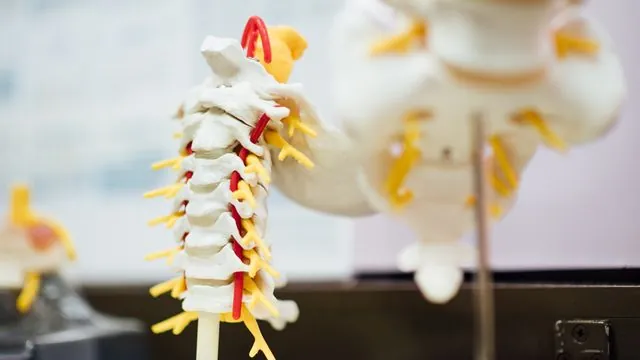
Breaking Boundaries: How Ultrasound is Revolutionizing Bladder Control
2025-07-30
Author: Wei Ling
A Major Breakthrough in Bladder Control Technology
Urinary incontinence affects more than 33 million Americans, significantly impacting their quality of life and mental health. Those suffering from this condition often face challenges not only in daily living but also in social interactions.
A pioneering team from the University of Southern California (USC) has made remarkable strides in understanding how signals from the spinal cord control bladder function. This groundbreaking research could pave the way for innovative therapies aimed at restoring this critical bodily function.
Revolutionary Research Findings
In a study published in *Nature Communications*, researchers from USC's Viterbi School of Engineering and Keck School of Medicine utilized functional ultrasound imaging (fUSI) to monitor real-time blood flow changes in the human spinal cord during bladder filling and emptying. Directed by Charles Liu and Vasileios Christopoulos, the team uncovered key insights into the spinal cord’s influence on bladder control.
"The spinal cord has been an overlooked territory in neuroscience," Christopoulos explained. "While much focus has been placed on the brain, we sought to explore the spinal cord’s critical roles, especially in essential functions like urination."
How fUSI Works: A Safe and Innovative Approach
To gain access to the spinal cord for imaging, researchers cleverly utilized a unique opportunity presented during standard epidural spinal cord stimulation surgery for chronic low back pain. This method not only ensured safety but also allowed the team to simulate bladder filling and emptying while collecting data.
Liu remarked, "This study represents the first time we've identified areas in the spinal cord that correlate with bladder pressure. This information could revolutionize how we understand bladder control."
A New Hope for Patients
With over 20 years of experience merging engineering and medicine, Liu's team is keen on finding solutions that restore essential nervous system functions. They discovered that many patients prioritize regaining bladder and bowel control over motor functions, emphasizing the need for advancements in these areas.
"For many patients, the restoration of bladder control is far more pressing than walking," Christopoulos noted, highlighting how urinary dysfunction can lead to greater mental health issues and social isolation.
The Path Ahead: Opportunities for Innovative Therapies
This research opens the door to potentially developing personalized spinal cord interfaces that inform patients about their bladder states, helping them regain control. As Liu pointed out, understanding a process is essential before improvements can be made, and this study marks a significant shift toward precision medicine.
By combining neuromodulation approaches with pharmacological therapies, the team aims to create viable treatment options for millions suffering from neurogenic lower urinary tract dysfunction.
This impressive breakthrough could redefine lives, restoring independence and dignity to countless people affected by urinary incontinence.



 Brasil (PT)
Brasil (PT)
 Canada (EN)
Canada (EN)
 Chile (ES)
Chile (ES)
 Česko (CS)
Česko (CS)
 대한민국 (KO)
대한민국 (KO)
 España (ES)
España (ES)
 France (FR)
France (FR)
 Hong Kong (EN)
Hong Kong (EN)
 Italia (IT)
Italia (IT)
 日本 (JA)
日本 (JA)
 Magyarország (HU)
Magyarország (HU)
 Norge (NO)
Norge (NO)
 Polska (PL)
Polska (PL)
 Schweiz (DE)
Schweiz (DE)
 Singapore (EN)
Singapore (EN)
 Sverige (SV)
Sverige (SV)
 Suomi (FI)
Suomi (FI)
 Türkiye (TR)
Türkiye (TR)
 الإمارات العربية المتحدة (AR)
الإمارات العربية المتحدة (AR)